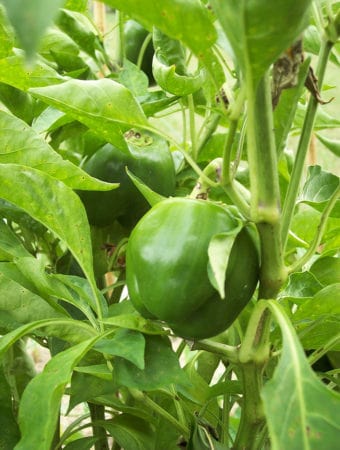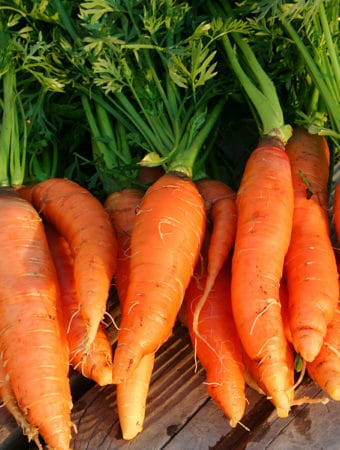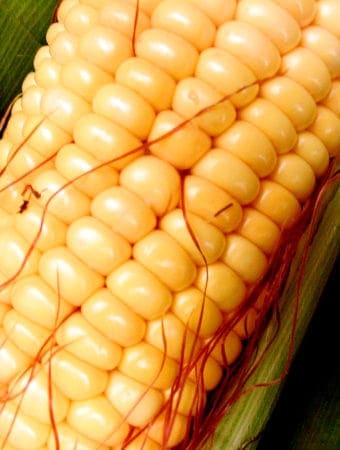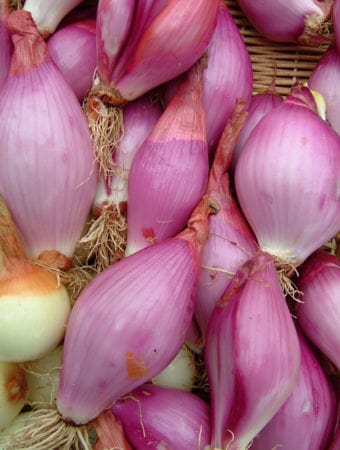Dessert grapes and wine grapes are not difficult to grow in the home garden. Grapes grow well in most regions.
The most commonly grown grapes fall into two categories American grapes and European grapes. American grapes are most hardy; they will grow in regions where winter temperatures fall to 0°F (-18°C). European grapes are less hardy; they can survive without damage where winter temperatures drop to 10°F (-12°C). European grapes prefer a long, warm growing season—at least 170 frost-free days.
American and European hybrids (also called French-American hybrids) are resistant to fall and winter cold and require a long, warm growing season. They have the best qualities of both American and European varieties.
In warm, humid summer regions—such as the Southeast and South Central United States– Muscadine grapes are the best choice to grow. They thrive in the summer heat.
After selecting the right grape for your garden, growing and pruning grapes is not that difficult. For the most flavorful grapes and the best yield, you will want to spend a few hours in the first year or two training the vines and in subsequent years a few hours each season pruning the vines. The time investment for a good yield of flavorful grapes is minimal.
Grape Types
There are several types of grapes:
- American, or fox, grapes (Vitis labrusca) are good growers; they are for fresh eating or jelly. American grapes have soft flesh and a musty flavor and aroma; the pulp slides easily out of the skin.
- European wine grapes also called Vinifera grapes (V. vinifera) are used for making wine, fresh eating, and drying. They are less hardy than American grapes. European grapes have a mild flavor; the fruit is firm and the skin does not slip off the flesh. European grapes are more susceptible to disease than other types.
- French and American hybrid grapes have the best qualities of American and European grapes. They are vigorous growers; they are resistant to winter cold and require a long, warm growing season. They have the strong flavor and aroma of American grapes and they have the firmer flesh and non-slip skin of European grapes.
- Muscadine grapes (V. rotundifolia) thrive in hot, dry regions; they can be eaten fresh or made in jelly, juice, or wine. These grapes turn bronze, dark purple, or black when ripe.

Choosing Grapes to Plant
- Plant 1-year-old plants that are virus-indexed and certified disease-free. A one-year-old plant will be about 14 inches tall.
- American and hybrid types can be grown from cuttings on their own roots.
- European grapes should be grafted to phylloxera-resistant rootstocks. (Phylloxera is sap-sucking insect related to the aphid feeding on the roots and leaves of grapevines.)
- Choose cultivars that are resistant to grape diseases in your area. Contact the nearby Cooperative Extension Service for recommendations.
- For home growing, choose a cultivar that is self-fertile. (Most grapes are self-fertile, but a few muscadine grapes require a cross-pollinator.)
Best Climate and Site for Growing Grapes
- Grapes are hardy from Zone 4 to 10; choose a cultivar that grows well in your region.
- American grapes are hardy from Zones 4 to 7; they are not hardy in regions where the winter temperature drops below -10° They grow best where there are at least 165 to 180 frost-free days.
- European, Vinifera, grapes grow best in arid climates. They are hardy from Zone 7 to 10. They grow best where there are 170 or more frost-free days each year.
- French-American hybrids are widely adaptable.
- Muscadine grapes grow from Zones 7 to 9. They can withstand high heat and humidity and are mostly disease resistant.
- Plant all grapes in full sun with good air circulation.
- Grapes grow best in light, loamy soil rich in organic matter. However, grapes can also grow well in rocky, flinty, or chalky soil. Grapes that grow in lighter soil (not loamy) commonly mature sooner and have higher sugar levels.
- Choose a planting site with deep (9 to 12 inches or more) of well-drained soil.
- Grapes grow best in slightly acid to neutral soil with a pH of 5.5 to 5.7. The quality of the soil can affect the flavor and sugar content of the grape.
- Avoid planting in low spots where chilly air can settle.
- Do not plant near wild grapes that can harbor disease.
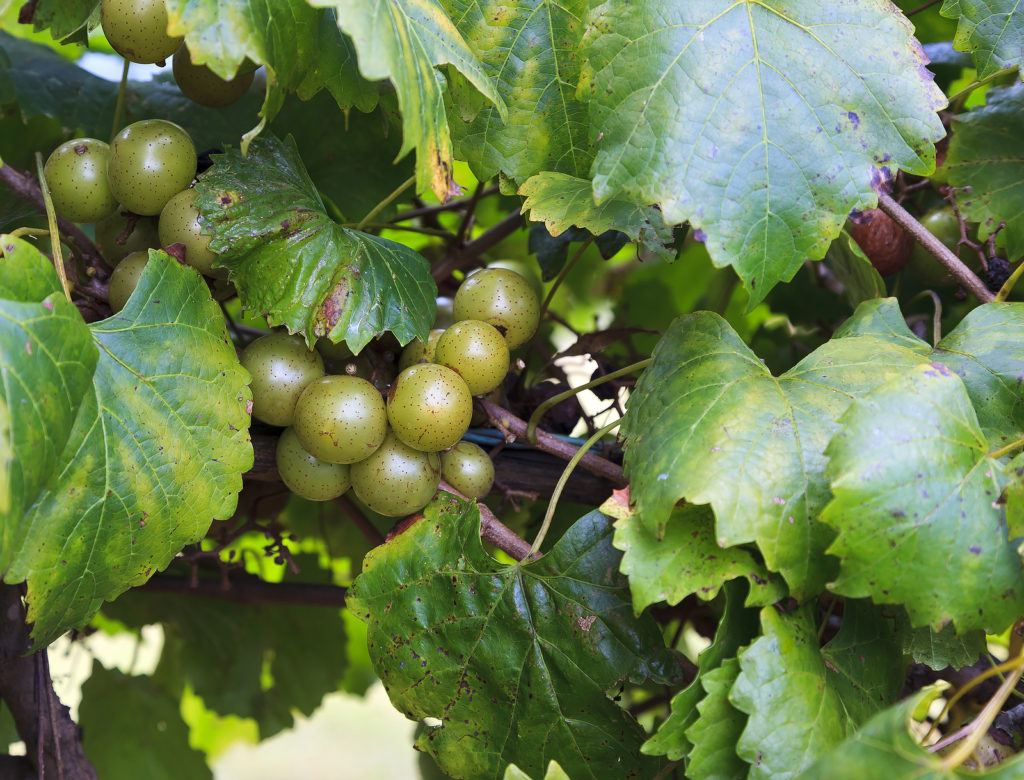
Grape Pollination
- Most grape cultivars are self-pollinating and self-fruitful. Some Muscadine varieties require cross-pollination.
Spacing Grapes
- Set up a vine support system before planting. See the Training section below.
- Space American and European type grapes 8 feet apart beneath the support; space rows 5 feet apart.
- Space Muscadine grapes 20 feet apart with 12 feet between rows.
Planting Grapes
- Plant grapes in late winter or early spring. Prepare the ground for the fall before planting.
- Dig holes 1 foot in diameter, wide enough to spread out the roots.
- Plant grafted grape plants so that the graft union is 2 inches above ground level.
- Plant non-grafted grapes at the same level they were growing in the container; the lowest bud on the trunk should be even with the soil surface.
- Firm the soil around the roots so that no air pockets are near the roots; douse the hole with water to wash soil tight around the roots; then fill the hole.
- Let grapes grow untrained a year after planting; this will allow roots to develop. Pinch off flowers during the first year.
- Start training grapes to the support the second spring after planting.
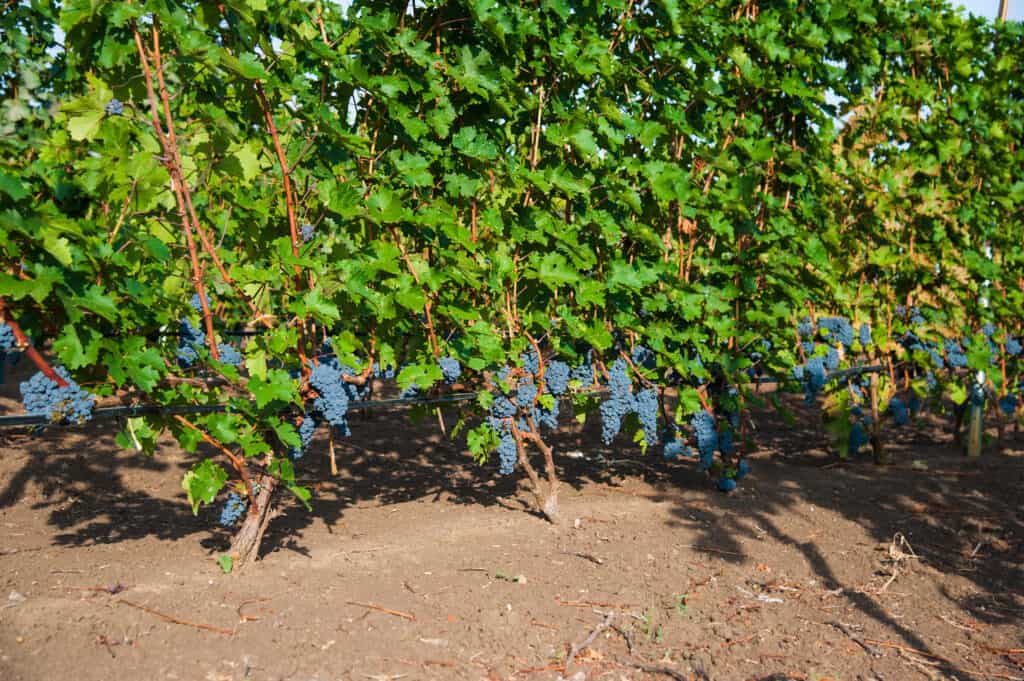
Training Grapes to a Wire Trellis
- The simplest support method for backyard grapes is called the two-arm or four-arm Kniffen system which is essentially a wire trellis. Set two sturdy posts 20 feet apart then string two parallel wires between the posts at 36 inches and 60 inches above the ground (this is the four-arm Kniffen); for hybrid varieties use three wires (six arms) at 30 inches, 48 inches, and 66 inches. Plant young grapes under the wire at the recommended spacing (see above).
- Begin training plants the second year after planting. In late winter, cut the vine back to a stump with two buds. When the buds start growing, train the strongest of the two shoots up on a wooden stake to form a trunk; remove the weaker shoot.
- When the trunk reaches the lower wire, choose a side shoot to creep in each direction on the wire. Tie the shoots to the wire with elastic horticultural tape; as the canes grow spiral them around the wire. These trained canes are called “arms”.
- When the trunk reaches the second wire choose two more side shoots and tie them to the wire.
- Remove the growing tip of the trunk when it is about 6 inches below the top wire and choose two more shoots to tie into the top wire.
- This training will create a tall main trunk with sets of selective side shoots which is important for growing the best quality grapes. See Pruning below for more on this.
- There are other grape training methods (head pruning, fan pruning–also called cane pruning, cordon pruning); they are variations of the training described here. Head pruning is often used for European vinifera grapes: the trunk is trained to about 5-feet high then a ring of arms radiates like an umbrella from the top; fruiting spurs grow from the arms.
Pruning Grapes
- Pruning grapes once a year or more often is important, otherwise, the grapes are borne farther and farther from the main trunk on the ends of very long canes; when canes are long nutrients from the roots must travel farther and farther and the quality of the grapes will decline. Pruning is important to keep the grape clusters near the main trunk.
- Prune in spring when the vines are dormant.
- Each spring prune away unwanted shoots growing off the trunk or roots.
- To insure against shoot damage in the future, leave a short two-bud spur near the base of the trunk and beside each of the lateral arms. If lateral stems are lost, the spurs can grow new laterals.
- On the main lateral arms running along the wires, thin away side branches so they are spaced one every 4 inches; trim these side branches so that there are 8 to 15 buds on each.
- The fruit is always borne on the new woody growth or side branches of the present season; grapes do not bear fruit on wood from previous seasons. Pruning as described above will ensure the best production potential.
- The fruit grows best on hard cane about the size of a man’s small finger.
- With training and pruning, a vine can carry about 25 buds by the third year
Thinning Grapes
- If vines set a heavy crop, thin out some clusters while the fruits are still small and hard. Remove the weakest clusters first; remove some fruits from heavy fruited clusters to allow for air circulation. Space clusters so that each gets maximum sunlight and air circulation.
- Pinch or cut off leaves around ripening clusters in mid-summer to increase air circulation and sunlight to each cluster.

Grape Care, Nutrients, and Water
- Keep the soil evenly moist around grape plants during the first year; in subsequent years plants can be sustained by deep, occasional watering. Be sure to water in spring when shoots are developing and during midsummer droughts. Also, water whenever canes become droopy.
- Feed grapes with aged compost, aged cow manure, or commercial organic mix in spring. Feeding plants after midseason can cause rapid growth, low-quality fruit, and leave plants susceptible to frost damage in autumn.
- Muscadine grapes will benefit from a nitrogen-rich fertilizer in spring, such as alfalfa meal.
- Mulch under vines to control weeds. Mulch around trunks in autumn to protect roots from the winter cold. Rake back the mulch in spring when you add new aged compost or manure.
- In very cold winter regions, put windbreaks in place to protect vines from cold winds or put plastic tents over vines.
Propagating Grapes
- American and European grapes can be propagated by cuttings and grafting.
- Muscadine grapes can be propagated by layering.
- To propagate by cutting choose a mature wood cutting about the size of a pencil. Let the cut tips form a callous over the winter; once the callous forms set each cutting in soil with the growing tip up. Rooted cuttings can be planted in the garden the second spring after cutting.
- To propagate by layering, bend a vigorous cane to the ground and cover it with soil leaving three tips buds exposed. Roots will grow from nodes along the cane in a few months; new plants can be cut from the mother plant and replanted.
- European vinifera canes are commonly grafted to the disease-resistant rootstock. The best time to start a graft is in late winter when the canes (called “scions”) are dormant.
Harvesting Grapes
- Harvest grapes when they are full-colored and sweet flavored usually from late summer to mid-fall depending on the variety. When grapes are ripe the stem will brown and slightly shrivel
- American and European grapes in a bunch commonly ripen at the same time.
- Harvest muscadine grapes individually as they ripen.
- Use a sharp knife or pruner to cut the bunch away from the vine. Handle the bunches carefully; try to preserve as much of the powdery bloom on the berries as possible. Be careful not to stack or crush bunches; use shallow 4-quart baskets.
- Harvest during the coolest part of the day if you plan to store or refrigerate the grapes.
- Grapes do not continue to ripen after picking.

Storing Grapes
- Store grapes not refrigerated in a cool place at 40 to 50°F; for long storage place bunches in trays in single layers.
- American and European grape types will store in the refrigerator for about 4 weeks.
- Muscadine grapes will store in the refrigerator for one to two weeks.
- Grapes not used fresh can be frozen, dried, canned, or made into juice or wine.
- Grapes for wine are usually harvested all at one time and at various degrees of ripeness
- Grapes for jelly and jam are usually picked early so that bunches contain some underripe berries that are full of pectin which will prevent crystals from forming in the processed jelly.
- Grapes for juice should be harvested at full maturity and ripeness.
Grape Diseases
- Plant cultivars that resist diseases common in your area. Check with the nearby Cooperative Extension Service for recommendations.
- Black rot is a fungal disease that causes reddish-brown leaf spots and fruit to become hard, shriveled, and mummified. Remove and destroy mummies and diseased leaves and clean up debris below the vines. Spray plants with a copper fungicide in spring before buds begin to turn green. Spray every 14 days; do not spray when the temperature is greater than 80°
- Botrytis bunch rot is a fungal disease that will cause fruits to be coated with fluffy gray-brown fungal spores. Destroy infected fruit. Plant resistant and disease tolerant cultivars. Thin crowded fruit clusters to ensure good air circulation around fruits.
- Anthracnose is a fungal disease that causes sunken, dark-ringed spots on leaves and fruit. Remove and destroy infected leaves and fruit. To prevent anthracnose spray with lime sulfur in spring when buds swell.
- Powdery mildew is a fungal disease that produces a white powdery coating on the upper surfaces of leaves and leaves fruit discolored as well. Leaves may turn brown and drop early and dark patches may appear on the trunk and branching stems. Prevent a reoccurrence by spraying with lime sulfur as buds swell in spring.
- Downy mildew is a fungal disease that causes a cottony white growth on the undersides of leaves; leaves may have brown spots and drop early. Some fruits may become hard and discolored. Remove and destroy infected leaves and fruit. Prevent downy mildew by spraying plants with lime sulfur when buds swell in spring.
Grape Pests
- Grape berry moth caterpillars chew holes in leaves and fruit; they leave webbing on fruit as well. The adult is a grayish-purple moth. Hang grape berry moth pheromone traps among the vines to catch and kill the moths. Spray plants with Bacillus thuringiensis to kill caterpillars.
- Birds will eat ripening fruit. Exclude birds by draping bird netting over vines.
Grape Varieties to Grow
- Grapes for fresh eating and dessert (these will also appear among the grapes categories below): ‘Buckland Sweetwater’, ‘Dornfelder’, ‘Brandt’, ‘Flame’, ‘Lakemont’, ‘Perlette’, ‘Muscadine’, ‘Concord’, ‘Canadice’, ‘Interlaken’, ‘Himrod’, Muscadine grapes, Regent.
- American and American hybrids: ‘Beta’, ‘Blue Jay’, ‘Buffalo’, ‘Caco’, ‘Campbell Early’,Catawba’, ‘Concord’, ‘Delaware’, ‘Fredonia’, ‘Golden Muscat’, ‘Moore Early’, ‘Niabell’, ‘Niagra’, ‘Senaca’, ‘Sheridan’, ‘Steuben’, ‘Van Buren’, ‘Worden’.
- American Seedless: ‘Canadice’, ‘Concord Seedless’, ‘Glenora’, ‘Himrod’, ‘Interlaken’, ‘Lakemont’, ‘Romulus’, ‘Suffolk Red’.
- European-Vinifera: ‘Black Monukka’, ‘Blackrose’, ‘Cardinal’, ‘Csaba’, ‘Emperor’, ‘Flame Seedless’, ‘Flame Tokay’, ‘Italian Muscat’, ‘Muscat of Alexandria’, ‘Olivette Blanche’, ‘Perlette’, ‘Red Malaga’, ‘Ribier’, ‘Rish Baba’, ‘Ruby Seedless’, ‘Thompson Seedless’, ‘Cabernet Sauvignon’, ‘Chardonnay’, ‘Merlot’, ‘Pinot Noir’, ‘Riesling’ , ‘Sauvignon Blanc’.
- French hybrids: ‘Aurora’, ‘Baco Noir’, ‘Cascade’, ‘Chelois’, ‘DeChaunac’, ‘Foch’, ‘Seyval Blanc’, ‘Swenson Red’, ‘Veeblanc’, ‘Villard Blanc’.
- Muscadine: ‘Creek’, ‘Dulcet’, ‘Higgins’, ‘Hunt’, Magoon’, ‘Scuppernong’, ‘Tarheel’, ‘Topsail’, ‘Yuga’.
Also of interest:




